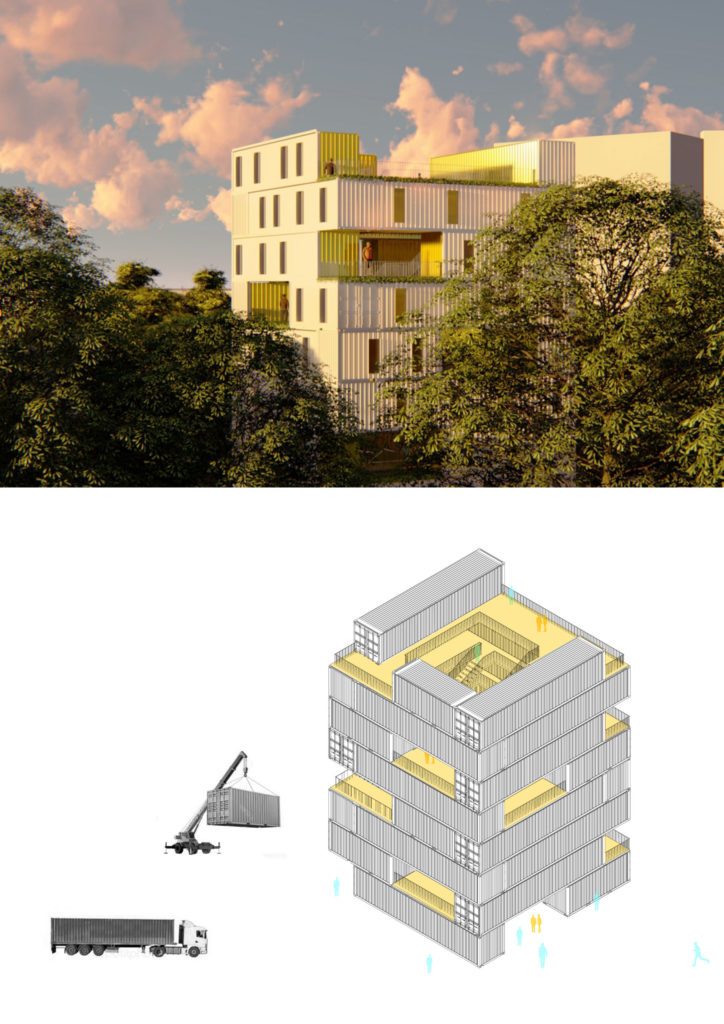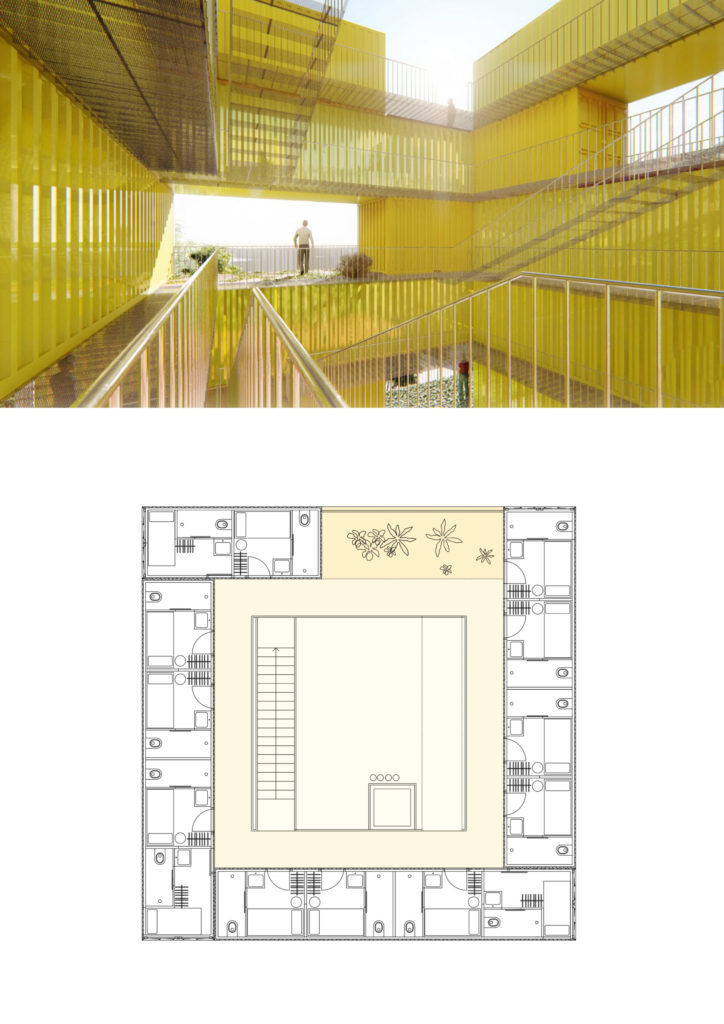
Design Challenge
#3: How might we learn from COVID-19 to reimagine our future for life, work, learning and play?
Project Description
In this project we propose viable housing alternatives made with practically opposite parameters. From big, collective, permanent structures in remote location To small, temporary interventions in strategic locations. The project generates desirable spaces and situations, valid for a migrant worker as for a backpacker tourist.
Criteria #1: Value
INDIVIDUALITY
With the new housing proposal, better living conditions are promoted. Facing a model based on collectivization, we claim the individuality of the most private activities related to hygiene and rest. Each inhabitant has his own private space with his own bathroom.
USE OF EXISTING RESOURCES
We make good use of old or purpose-built shipping containers, in a way that cross ventilation is fostered, reducing the risk of infection.
Criteria #2: Inspiration
VERNACULAR
We can consider the container as a vernacular product. Singapore is the second largest port in the world in terms of Container traffic, with 36.6 million (2018) (TEU) s handled. There is a real know how of how to handle and transport and accumulate these objects.
LIGHT
Sunlight is filtered inside this porous structure. Each of the rooms have one side protected, creating a difference in temperature that fosters airflow. Each of the rooms will be equipped with 1 UVc germicidal lamp to help remove the virus when the room is not in use.
Criteria #3: Impact
PROVEN
The reuse and customisation of containers is proven as an effective method for the generation of prefabricated habitable structures. It constitutes one of the fastest PPVC solutions, allowing for a very quick and clean assembly and fast disassembly.
Criteria #4: Timeliness
We cannot imagine Singapore without the contribution of migrant workers, they are an essential factor in our productive system. Recent events around the Covid–19 have focused on its living conditions.
It has seen much debate about migrant workers and their place in Singapore in the last weeks. With the number of confirmed COVID-19 migrant patients increasing day by day, fingers are being pointed at the dormitory operators due to its conditions. In this new scenario, it seems no longer viable to confine such large groups of people in mega-dormitories.
Criteria #5: Systems Thinking
INSTANT. ITINERANT. ADAPTABLE.
This new model offer new possibilities for the city to have buildings in safe places, strategically planned. This is an scalable concept that can be adapted to future conditions.
The project pragmatically updates the utopian housing proposals of the 1960s. From Archigram´s “Instant City” to the housing proposals of Japanese metabolists.


